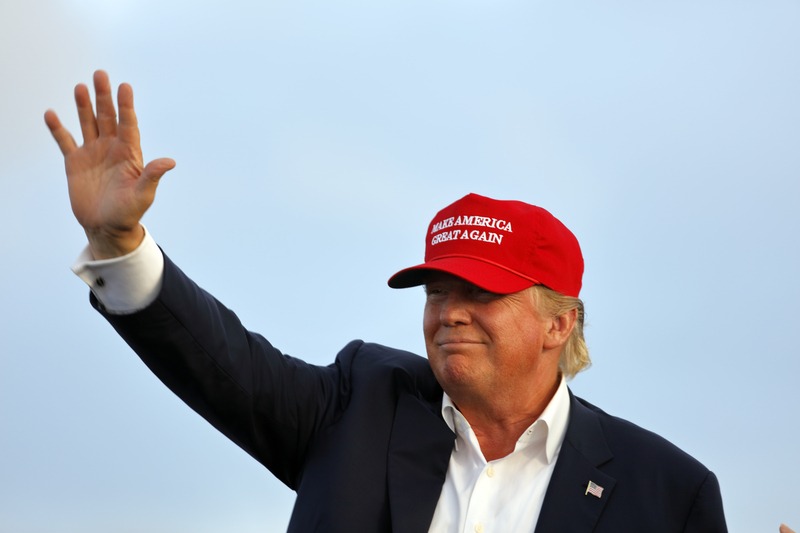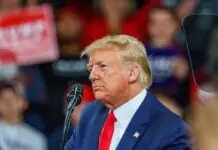President Donald Trump, in golf attire, directed a series of substantial airstrikes against Iran-backed Houthi rebels in Yemen on Saturday, March 15, 2025. Images released by the White House show the president wearing a red MAGA hat bearing his signature as he observed the military operation.
Accompanying the images on the social media platform X, a caption stated, “President Trump is taking action against the Houthis to defend US shipping assets and deter terrorist threats. For too long American economic and national threats have been under assault by the Houthis. Not under this presidency.”
The photos depict Trump with a large black headset as he watches the bombings in the Middle East in real-time. National Security Adviser Mike Waltz and Secretary of State Marco Rubio are also featured in the posts.
In a notable diplomatic gesture, the State Department disclosed that Secretary Rubio contacted Russian Foreign Minister Sergei Lavrov before the strikes. A statement mentioned the communication aimed “to continue working towards restoring communication between the United States and Russia.”
The military operation, described by Trump as “decisive and powerful,” targeted several Houthi leaders and missile defenses in Yemen. The strikes were executed by the U.S. Navy, with the USS Harry S. Truman carrier strike group in the Red Sea participating in the mission.
“They have waged an unrelenting campaign of piracy, violence, and terrorism against American, and other, ships, aircraft, and drones,” Trump wrote in a Truth Social post announcing the strikes. “YOUR ATTACKS MUST STOP, STARTING TODAY,” he warned the group, adding that the United States will use “overwhelming force” in pursuit of its peaceful objectives.
The president also warned Iran to cease support for the proxy group, asserting that the country would be held “fully accountable” for the actions of its proxy. Trump stated that “hell will rain down” on them if they do not stop their attacks.
The Houthi-run health ministry reported significant casualties from the American strikes. At least 53 people were killed, including women and children, with numerous others wounded. The strikes impacted the capital, Sanaa, and other provinces, including the northern province of Saada.
The Houthis’ political bureau denounced the attacks as a “war crime” and vowed retaliation. Despite the U.S. military action, the rebel group has declared they will continue targeting shipping in the Red Sea until Israel lifts its blockade of Gaza.
Since November 2023, the Houthis have carried out over 100 attacks on international shipping, disrupting global commerce and prompting major companies to avoid the Red Sea. Many vessels now opt for a longer route around southern Africa, incurring a significant economic cost, according to Trump.
The attacks have resulted in the sinking of two ships and the deaths of four crew members, according to U.S. officials. The Houthis maintain control over the capital, Sanaa, and the northwestern region of Yemen, holding their position despite prior military efforts to weaken their capabilities.
This operation marks the first large-scale missile strikes against the Houthis during Trump’s second term. While the previous Biden administration conducted similar operations, the current administration seems to be adopting a more aggressive stance, with U.S. officials indicating the campaign could last for weeks.
Some critics have raised questions about the military action, particularly in light of Trump’s campaign promises. Social media users highlighted the apparent contradiction with his pledge to avoid starting new wars.
Nonetheless, the administration has justified the strikes as a necessary measure to safeguard American shipping interests and naval assets. Trump described the Houthis’ actions as an “unrelenting campaign of piracy, violence and terrorism” backed by Iran.
Experts point out that while the strikes mark the largest U.S. military operation in the Middle East since Trump’s return to office, they may not achieve their intended objectives. The Houthis control a rugged, mountainous region and have demonstrated resilience despite setbacks faced by other Iranian allies in the region.
The U.S. has designated the Houthi movement as a “foreign terrorist” organization, underscoring the administration’s firm stance toward the group.
As the situation unfolds, the international community is closely monitoring the responses from both the Houthis and Iran. Analysts suggest that while Iran is unlikely to become directly involved, they may seek alternative responses, such as resuming negotiations over their nuclear program.
The strikes and their repercussions represent a significant test for Trump’s Middle East policy and his administration’s approach to safeguarding international shipping lanes critical to global commerce.











